M37 Open Cluster
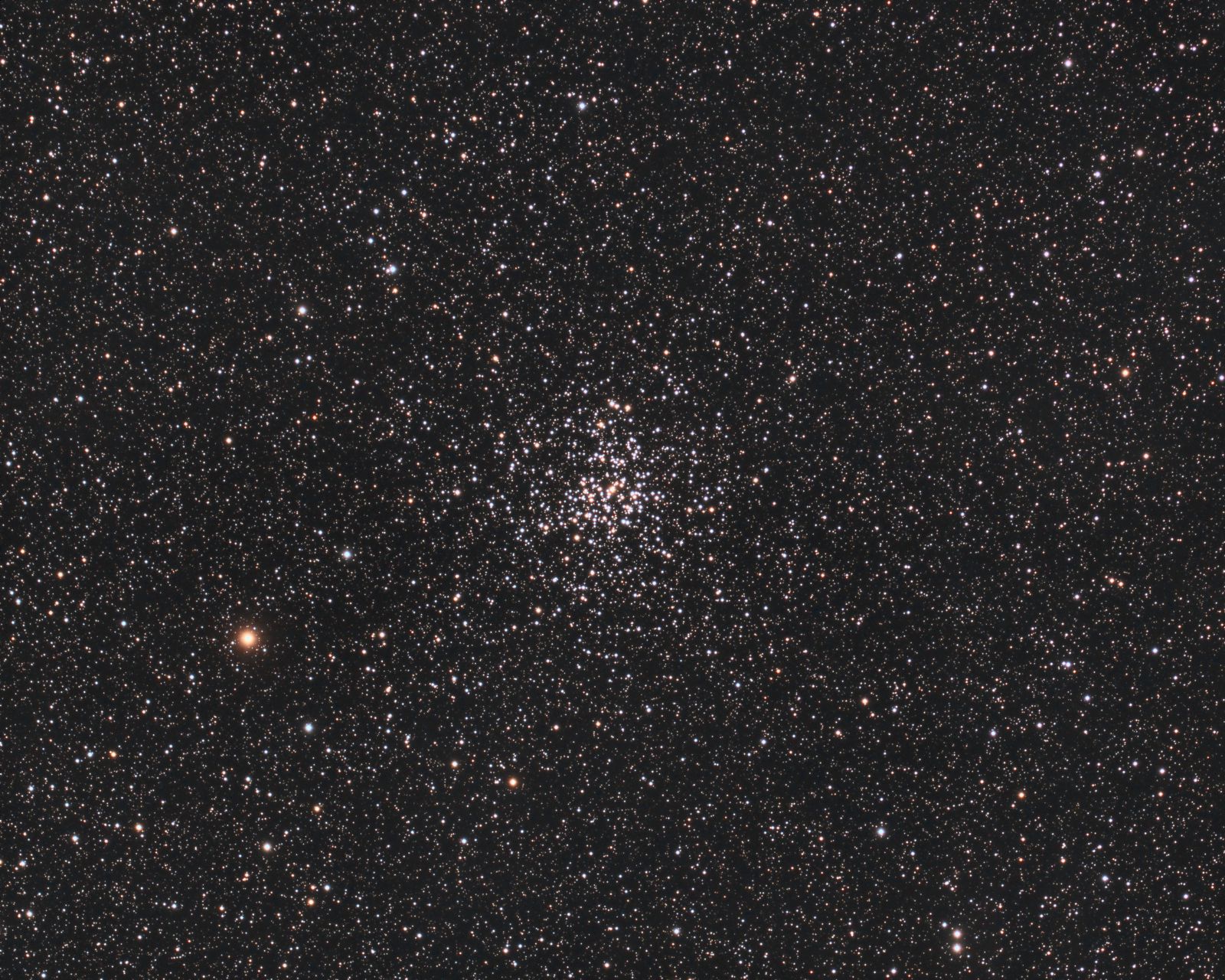 Click image for full size version
Click image for full size version
February 28, 2020
M37 is one of three bright open clusters in Auriga. The others are M36 and M38. They are great in binoculars or a small telescope, and can all be seen with the naked eye from a dark site. They were first recorded by an Italian astronomer, Giovanni Battista Hodierna before 1654, and are now in the famous Messier Catalogue of dep-sky objects. M37 contains more than 500 stars with a total mass more than 1,500 times that of the Sun. It’s several hundred million years old, and is about 4,500 light years away. From its apparent size in the sky and this distance estimate, the cluster has been estimated to span 20-25 light years. Its triangular shape is distinct in binoculars or telescopes.
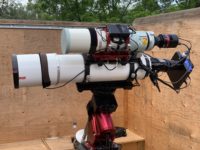 In a first for me, I had two telescopes and cameras working simultaneously to gather the light used in this image. This maximized the amount of light I could capture in the fleeting clear-sky time available. I plan to use this stereo acquisition approach going forward.
In a first for me, I had two telescopes and cameras working simultaneously to gather the light used in this image. This maximized the amount of light I could capture in the fleeting clear-sky time available. I plan to use this stereo acquisition approach going forward.
I’ve shot M37 several times. My 2010 image was captured with a 6″ f/8 refractor and QSI583wsg camera. My 2016 image was taken with a 10″ reflector and SBIG STL-11000 camera. In 2019 I imaged it using the same setup as the luminance of the current image.
Tekkies:
Luminance: Sky-Watcher Esprit 150 f/7 refractor and QHY 16200-A camera with Optolong L filter
Chrominance: Takahashi FSQ-106 ED IV @ f/3.6 and QHY367C one-shot colour camera with Optolong L-Pro filter
Chrominance: 33 x 3m = 99m
Total: 4hr39m
Data Reduction and Processing
Preprocessing: The WeightedBatchPreProcessing script was used to create a Luminance master frame (from the mono camera) and a RGB master frame (from the one-shot colour camera).
Gradient Removal: DBE was applied to L and RGB masters using Subtraction to remove the minimal gradient that remained after integration.
Colour
Channel Registration: To improve channel registration, the colour channels of the RGB master were extracted and aligned with StarAlignment, using Thin Plate Splines with Distortion Correction and the green channel as the reference frame. The registered colour channels were recombined with ChannelCombination.
Colour Balancing: Colour was balanced with ColorCalibration.
Linear Noise Reduction: MultiscaleLinearTransform was used to reduce noise in the background areas, using an internal mask to protect bright structures. Layer settings for threshold and strength: Layer 1: 5.0 0.85, 2 iterations; Layer 2: 3.5, 0.75, 2 iterations; Layer 3: 3.0, 0.5, 1 iteration; Layer 4: 1.0, 0.25, 1 iteration.
Stretching: HistogramTransformation was applied to make a pleasing, bright image, with background set to an intensity of approximately 0.10.
Lightness
Deconvolution: StarMask was applied with default settings to produce a Local Deringing Support Image. A clone of the image was stretched to use as a deconvolution mask. Deconvolution was applied (80 iterations, regularized Richardson-Lucy, external PSF made using PSFImage script with about 30 stars).
Linear Noise Reduction: MultiscaleLinearTransform was used to reduce noise in the background areas, using an internal mask to protect bright stars. Layer settings for threshold and strength: Layer 1: 3.0 0.85, 1 iterations; Layer 2: 2.0, 0.75, 1 iterations; Layer 3: 1.0, 0.5, 1 iteration.
Stretching: HistogramTransformation was applied to make a pleasing, bright image, with background set to an intensity of approximately 0.10.
Recombining Lightness and Colour Images
Registration of L and RGB: DynamicAlignment was used to register the RGB master to the L master.
LRGB Combination: The lightness image was applied to the RGB image using LRGBCombination with default settings.
Additional Processing
Nonlinear Noise Reduction: TGVDenoise was used in L*a*b* mode to reduce noise with a mask used to target the background areas and protect the stars (max. 1000 iterations and convergence selected for both lightness and chrominance).
Final Steps: Background and star brightness, contrast, and colour saturation were adjusted in several iterations using CurvesTransformation with masks as required. ICCProfileTransformation (sRGB IEC61966-2.1; Relative Colorimetric with black point compensation) was applied prior to saving as a jpg.



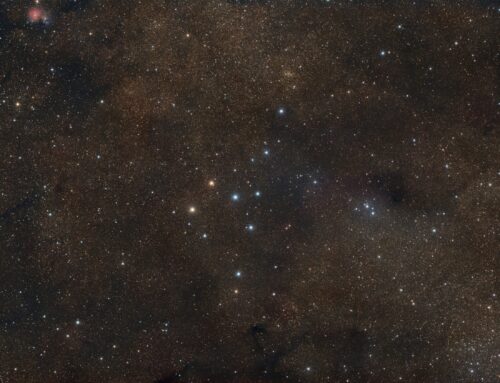
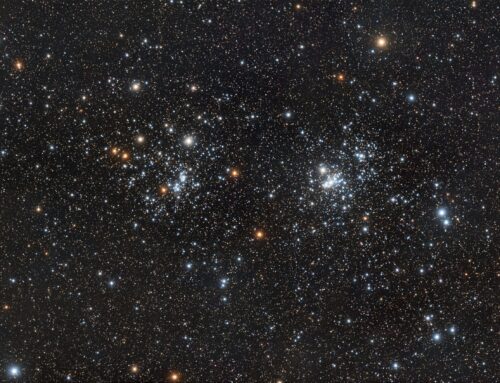
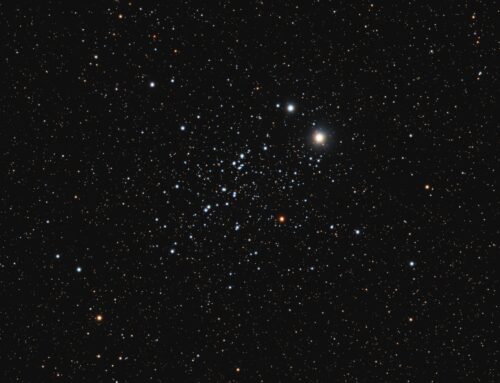
Leave A Comment